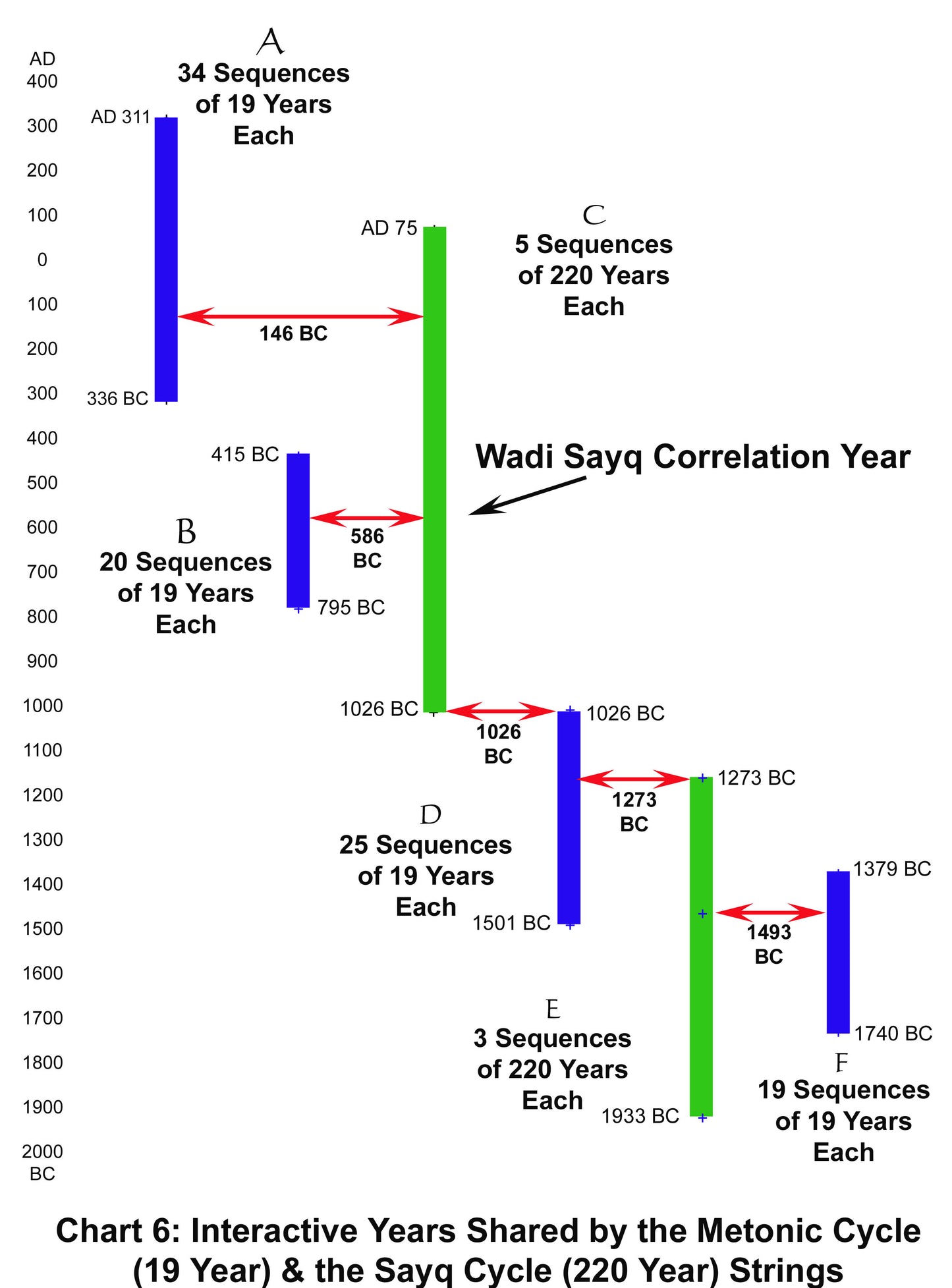ARI
The Metonic Cycle: Evidences and Implications of the 19-year Lunisolar Calendar System Used in 586 BC at the Wadi Sayq Observatory, Dhofar, Oman
The Metonic Cycle: Evidences and Implications of the 19-year Lunisolar Calendar System Used in 586 BC at the Wadi Sayq Observatory, Dhofar, Oman
Couldn't load pickup availability
Abstract:
This article addresses the significance of three interactive variations of the 19-year Metonic cycle and the existence of a 220-year Sayq cycle discovered during the 2017-2019 studies of Early Iron Age astronomical alignments in the southeastern Arabian site of Wadi Sayq. These alignments consist of numerous boulders arrayed in nonrandom linear displays oriented to coincide with lunisolar and stellar rise/set events on the distant horizon. These three Metonic cycle variations include: (1) the traditionally accepted general 19-year cycle of 6,939.6 days; (2) the newly identified extended cycle of 19 repetitions of 365.2422 years or 6,939.6 years, a long range version of the Metonic cycle thus facilitating accurate temporal projections over thousands of years; and (3) the newly discovered specific Metonic cycle, which is based on: (a) the vernal equinox coinciding with the full moon once each 19 years; (b) linking years embedded in each successive 19 year cycle consisting of 19 x any integer = linking year during BC or AD (Gregorian); and (c) on a specific point- of reference date, which occurred for the Wadi Sayq inhabitants on March 21, 586 BC, enabling their precise calendar calibrations pertinent to holy day and Passover observance during the occupation period of 587 to 584 BC. In addition, during the study of the Metonic variations a 220-year lunisolar Sayq cycle has also been identified and subsequently named after its Arabian discovery locale. The Sayq cycle is not affiliated with the Metonic cycle except through their common point-of-reference days, of which March 21, 586 BC, in its specific Metonic cycle, is one of those dates. The Sayq cycle is an extension of the Saros and Exeligmos cycles in that 12 repetitions of the Saros 18.33-year cycle = 220 years (219.96) and 4 repetitions of the Exeligmos cycle also = 220 (216.36) years. Occasionally used by astronomers for eclipse studies, the general 19-year lunisolar cycle contains linking years, but lacks point-of-reference dates. Nor should the general Metonic cycle be confused with ether the 18.03 to 18.618-year Saros cycle, nor with the Draconic year of 6,939.1161 days (as configured by the Draconic month of 27.21222 x 255 days), which is almost identical with that Metonic version of 6,939.6018 days. In addition, both the 76-year Callipic and the 304-year Hipparchic cycles are extensions of the general Metonic cycle being multiples of 19 (respectively the integers 4 and 16). The Sayq, Callipic, Hipparchic and the extended variation of the Metonic cycle correlate with the 25,772-year Axial precession or Great Year cycle as follows: (1) 13 repetitions of 1980 years (the 220 year Sayq cycle x 9) = 25,740 years or 32 years < 25772 years; (2) 39 repetitions of the 76 year Callipic cycle = 25,764 years or eight years < 25,772 years; (3) 85 repetitions of the 304 year Hipparchic cycle = 25,840 years or 68 years > 25,772 years; and (4) 3.7 repetitions of the 6,939.6018 year extended Metonic cycle = 25,676.5 years or 95.5 years < 25,772 years. However, when the specific Metonic cycle is applied, the VOYAGER software computes the linking year of 25,764 BC based on 19 x the integer 1,356. Applying this date to the computer results in the year 25,771 BC as the point-of-reference year, wherein on that date the vernal equinox coincides with the full moon in a manner identical with all other coincident years in the specific variation of the Metonic cycle. Such interactive precision of lunisolar patterning among these eight astronomical cycles definitively demonstrates resonance, a unique harmony, existing among the orbits of the earth, moon and sun.
Archeological Research Institute
Wadi Sayq Technical Research Series, Paper No. 7 2020d
Share


